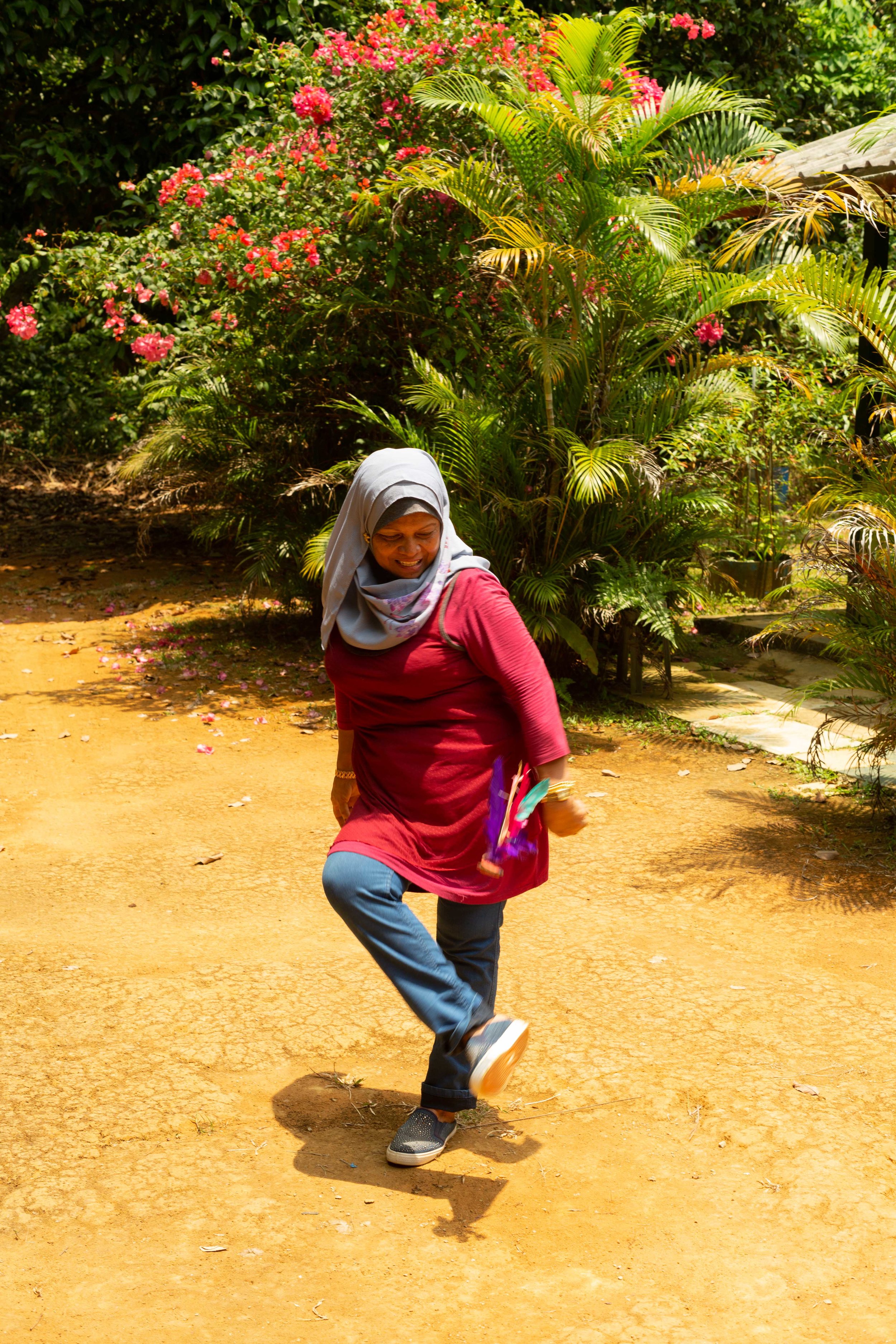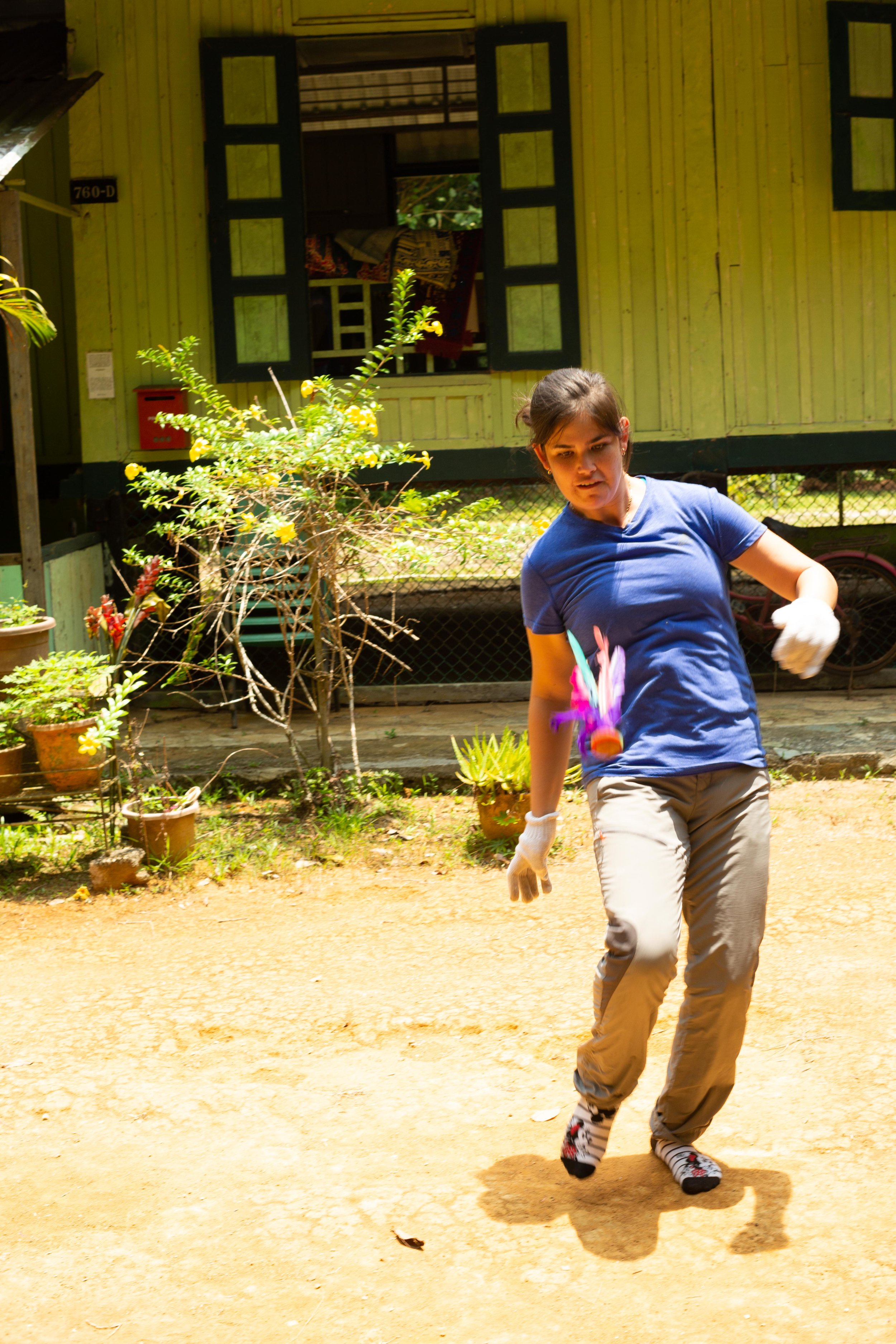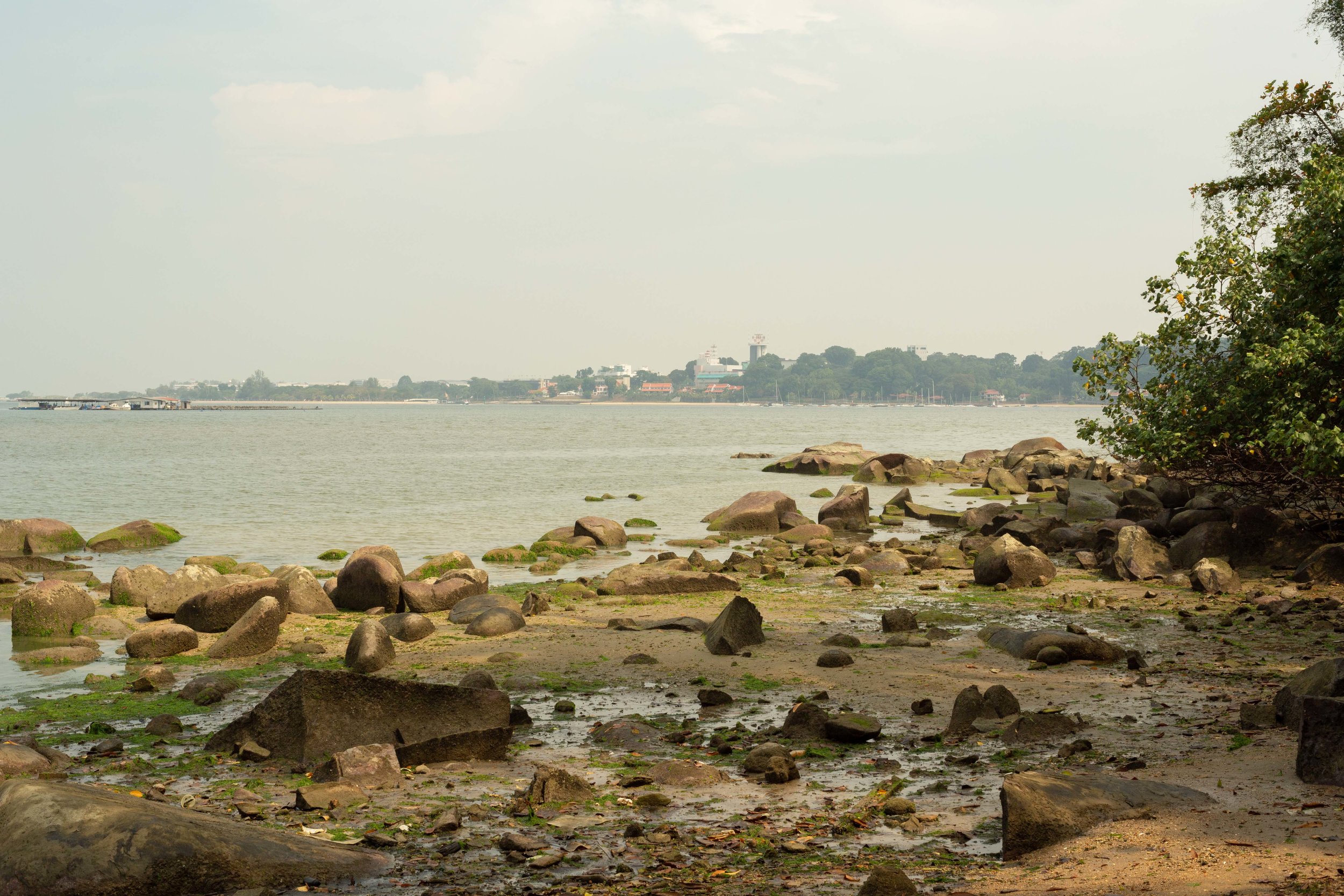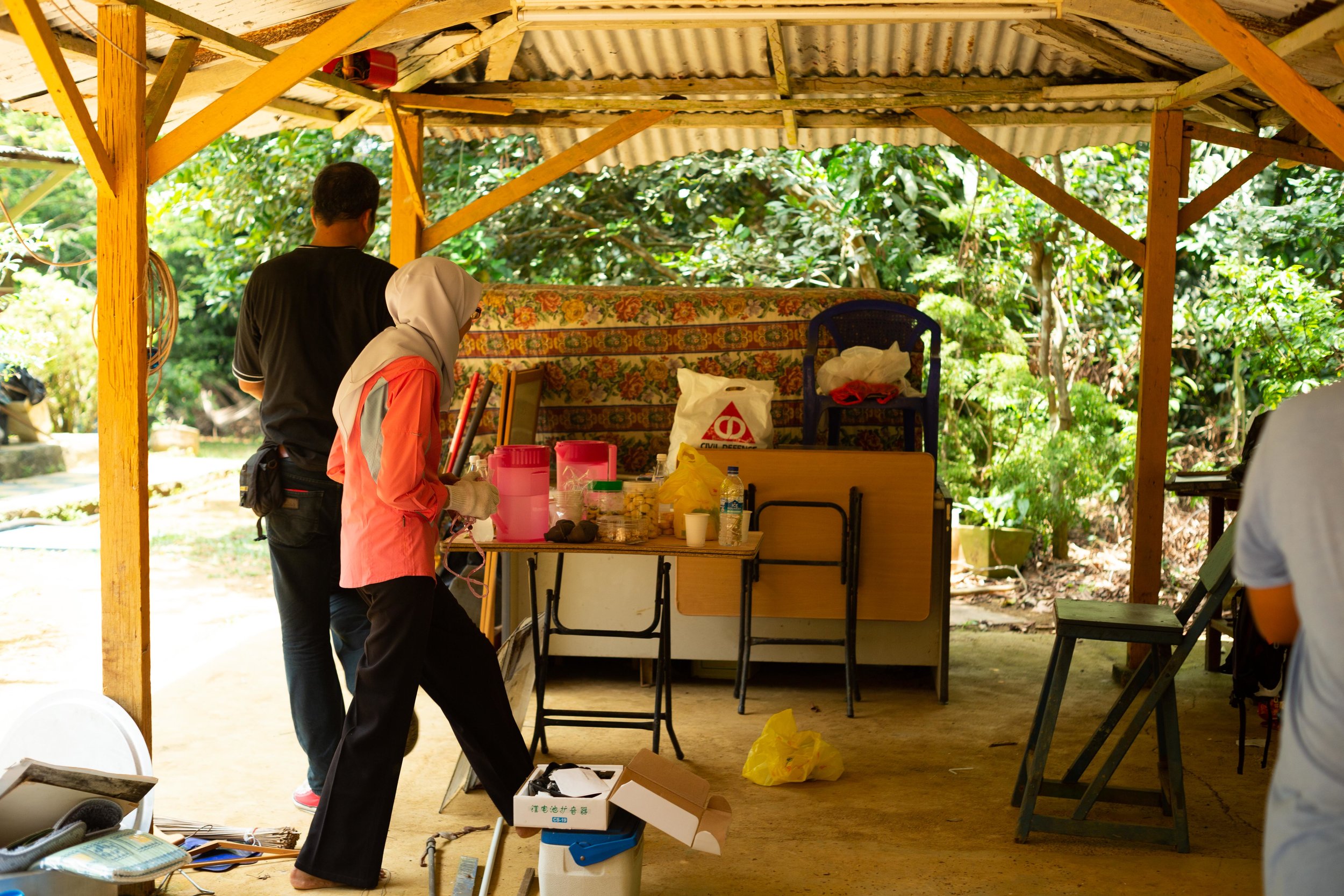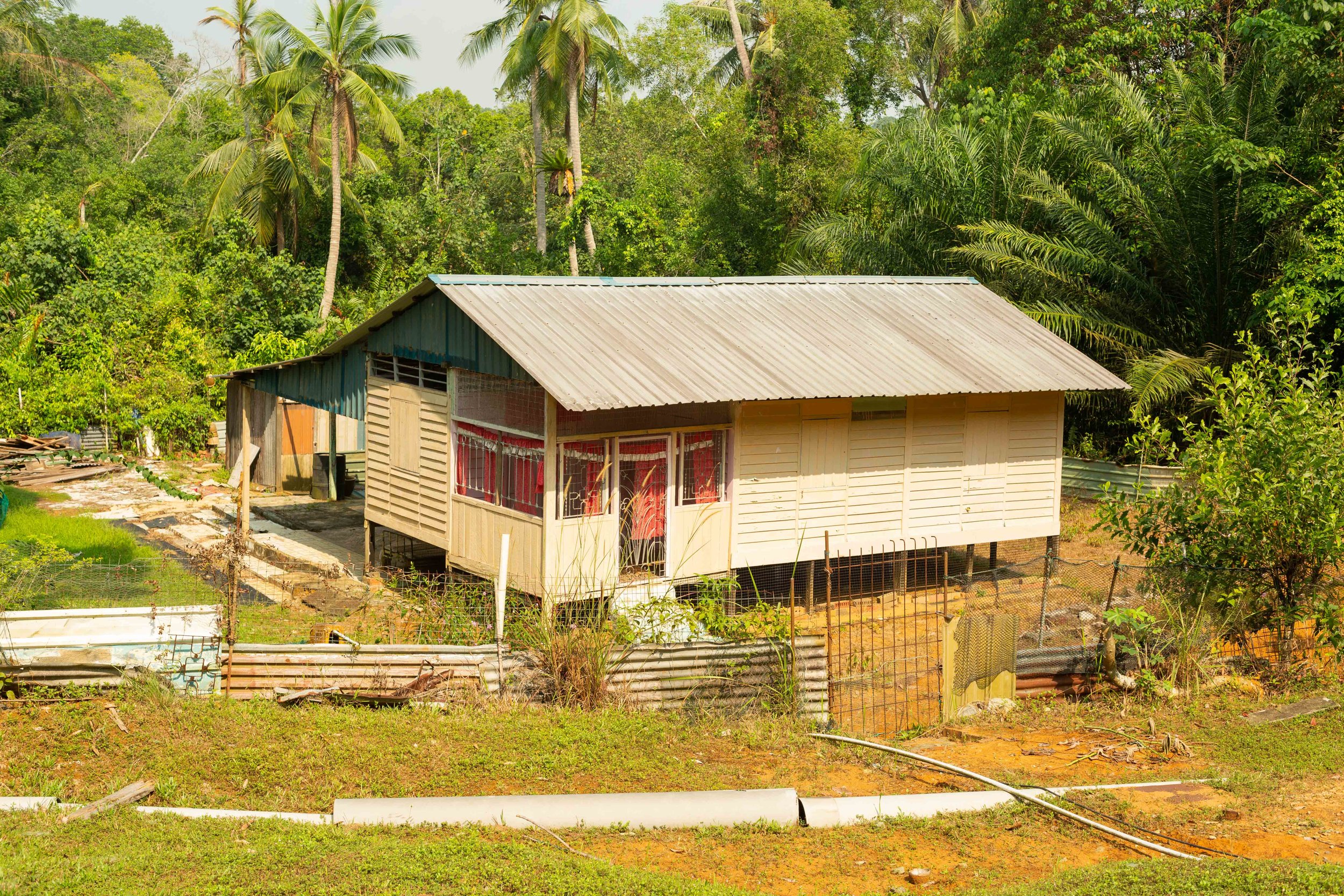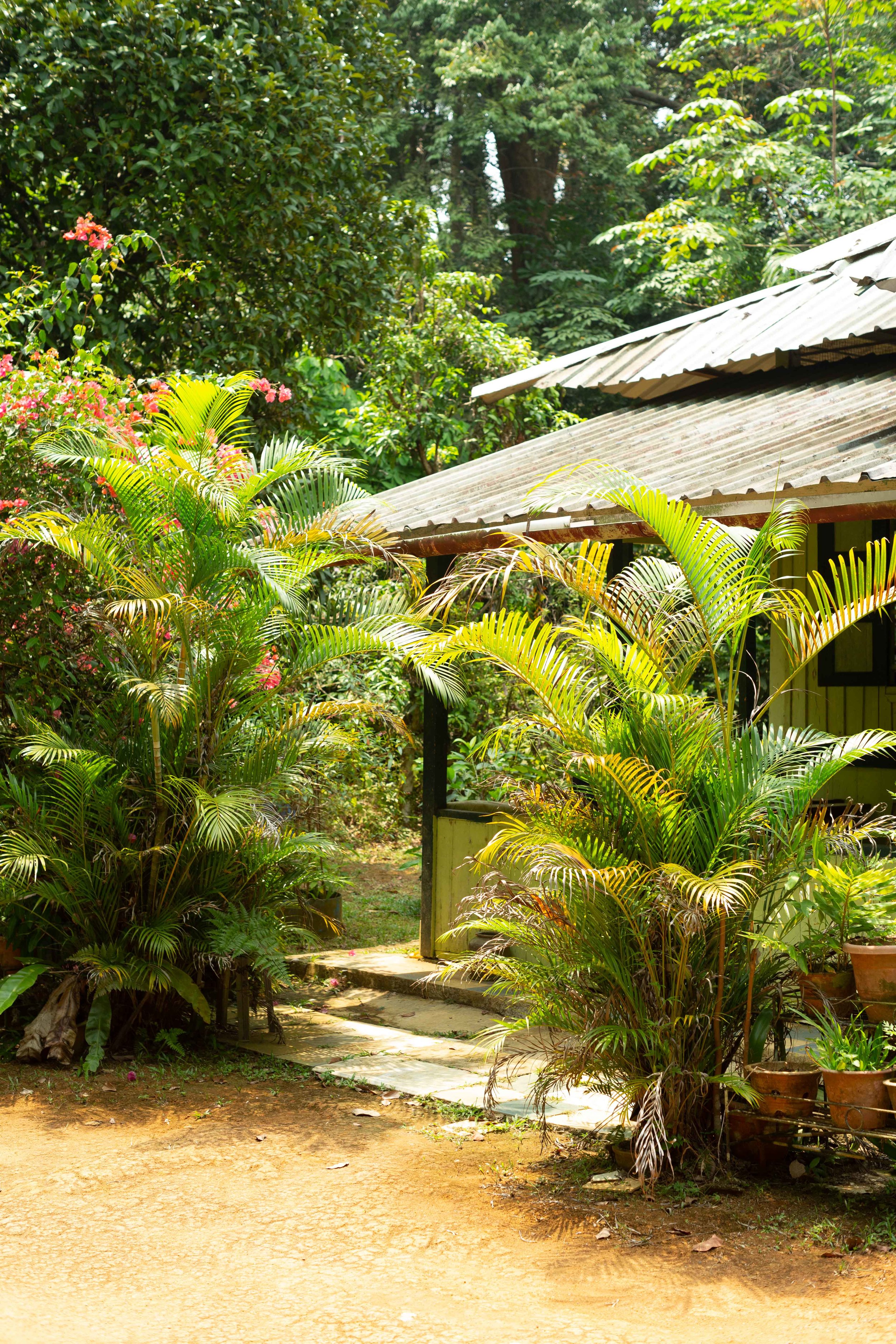Visiting The Malay Kampong Sungei Durian, Pulau Ubin
Photograph of the building in which we volunteered, over 100 years old and just one of fifteen remaining of Kampong Sungei Durian
This weekend, I joined for Nor Syazwan Bin Abdul Majid’s Kampong Clean-Up. Wan is responsible for Wans Ubin Journal, an online community organization motivated by his desire to maintain the community that lives in the Malay Kampong on Singapore’s last rural respite, the island of Pulau Ubin. Today's post brings more photographs captured this weekend, and posits a possible answer to the question posed last week; how can Pulau Ubin survive in the face of Singaporean Modernity?
Wan standing outside a house, see image below for the ‘before’ image
Wan’s Grandfather
Of all the possible stories to share from the weekend and from Wan’s expansive website, I think the most insightful is to look at his late grandfather, Sulong Bin Yunos. His grandfather left an impact on the island, having a river named after him, and being affectionately known to the islanders as Pak Awang Minyak. The name reveals half of his story. Minyak is a Malay word for oil, while Awang is a Malay word for an honored male commoner. His main work was spraying the bug repellant oil around the kampongs, but his legacy goes beyond that. It takes more than spraying oil to have a river named after you. The other half of his story is how he became known as Pulau Ubin’s Betel Planter.
Malay Wedding Procession in the 1980s, image courtesy Cik Rosmala
If you don’t know what Betel is, then you probably are not from Southeast Asia. Betel is a vine, classified as part of the pepper plant/vine genus. Its leaves are used raw for cooking, or as a flavorful wrapper for the addictive chewing of areca nut and tobacco.
Image of betel leaves, image courtesy Amazon
The farm covered between half to a full soccer field of land, making it the largest betel production center on the island. His harvest was sold to islanders as well as at the mainland’s Old Geylang Serai Market. The farm was an important part of Wan’s mother’s life too. “My mom fondly remembered helping her late father with the harvest,” (WUJ). The harvest required a four-day labor-intensive process, a fact which the whole of the island must have been aware of. A specialized iron thumb sheer is used to harvest the best leaves, and, “My mom told me that my late grandfather would make quite a number of [the iron thumb sheers] so that anyone who wished to help out with the harvest may do so too” (WUJ).
Sulong Bin Yunos represented an important part of Kampong Sungei Durian, which made his passing in 1981 hard on the community. The betel plantation could not survive much longer without him. There does not appear to be any remaining betel vines where the soccer field-sized farm had once stood. The relentless forest has reclaimed the land. But his importance to the community is reveled by the power of his legacy.
Wan’s family lived on the island from the 1950s up until 1989. He was not raised on Pulau Ubin, but his connection to the community is etched into the island’s history thanks to Sulong Bin Yunos. People he’d never met before become close family friends at the mention of his family. I witnessed this first hand as Wan came to introduce himself to a few neighbors he had not met before, which at this point is a rare introduction. As soon as his connection to the honorable oilman was known, these people welcomed him, sharing stories around a table of nutritious herbs and berries. This palpable sense of community on the island is a spectacular demonstration of the meaning of the kampong spirit.
Wan introducing himself to individuals off camera
“...I still find comfort in knowing that my mom and everyone else whom I have interacted with on Ubin, still fondly remembered my late grandfather, his betel plantation and his hard work in maintaining it - a testament to his love for his family and community” (source).
Nasi Lemak, delicious rice gifted meal from our hosts
Experiencing the Kampong Spirit
What is Kampong Spirit? In an academic realm, it is defined as,“...‘Kampong Spirit,’ where a community will come together to sustain and assist each other (Chia, 2013)” (pg 47). In other words, it’s a principle of neighborly communication and compromising for the greater social good. Considering this definition, it is not hard to believe that Wan's organization is a textbook example of the kampong spirit.
Cik Samsiah burning leaves and paper
For the Kampong Clean-up, we didn’t pick up trash in the forest outside the house, nor did we collect the shattered glass leading up to their front door. Knowing their situation, he knew that they would benefit most from our extra hands if we could help clear two bedrooms and the living room in order to make way for an NParks renovation of their space.
Residents Cik Rosmala, Cik Jupri and visitor Ana playing Chapteh, an incredibly fun game originating from China
Cik Nora holding a 19th century kerosene lamp
The 19th century kerosene lamp next to a coal-powered ironing device
Wan never grew up here, and his mother had not lived on Pulau Ubin since 1989. Still, the value of his grandparent’s role in the community has endowed him with such a powerful sense of urgency for retaining the community that he has run his website for over a year now with constant posts and community outreach. He knows the island is short on manpower, so the best thing he could do for the remaining residents is to find that help.
Interior of the Kampong house, showcasing the tradition air vents by the ceiling the allow airflow across the house, an adequate alternative to costly modern climate control technology
It is also important to understand that kampongs are not a state of poverty. Their spartan amenities and openness to nature may appear unfavorable, but if one defines poverty as being deprived of good quality in life, the access to good food and water at these kampongs can prove this wrong. The poverty endemic in Singapore’s mainland kampongs came from not being paid enough, not from the homes.
View from the shore near Kampong Sungei Durian toward mainland Singapore
Wan’s Role in Ubin’s History
Wan is part of a wider trend, with other organizations like NParks on the island, to make up for a lost generation on the island. The population of Pulau Ubin has steadily declined from the 1970s, when it peaked at over 4,000 residents, to its current population of roughly 50 people. Lost in the sheer number of people is the social glue that kept the community afloat. Helping to maintain the current buildings is absolutely vital to retain the physical infrastructure necessary to maintain or grow the population.
Cik Kamariah, resident of the Kampong, sorting through her belongings
A new kampong home built from funds pooled by the entire community after NParks would not provide funds to restore the existing kampong
Hearing from Wans Ubin Journal
If it were not for our kampong way of life, we would not be able to possess this kampong spirit that we are proud of; reaching out to others in need, living together in harmony and loving each other as one big family. Our kampongs are an important part of our Singaporean identity, and I hope you may join me in our preservation, restoration, and God Willing, rebuilding efforts to make Pulau Ubin thrive again.
The above quote was pulled from his Facebook page which you should definitely follow if you made it this far into this essay. As a follow up to the weekend, I asked him what his most satisfying accomplishment has been when reflecting on the year of Wan’s Ubin Journal. Here’s the story he shared:
“My biggest accomplishment would be Pesta Raya@Ubin last June where I organised a historic "Balik Kampung" (homecoming) event where over 350 former residents returned to the island to celebrate Hari Raya for the first time together as a kampong community. Through my liaison with both current and former residents, NParks, and stakeholders, we were able to bring the kampong back to life with open houses, potluck parties, traditional game stations, Malay arts performances, photo-taking and a mass dinner under beautiful lights.
“I would say that because of my work, the kampong didn't feel abandoned anymore. It sent a message that the people of Ubin would always hold their island home in their hearts and mind. We would start to see them bring along their children and grandchildren, which sparks hope that the next generation, such as myself, will do their part to preserve and celebrate Singapore's "critically-endangered" kampong heritage and identity.”
Final Thoughts
What we did this weekend may not be the easiest to explain, but it is what his community needed. By inviting us to this spirit of assisting on another, Wan invited us to experience the Kampong Spirit for ourselves, which in itself was an invaluable gift.
Entrance to the Kampong Sungei Durian house
At the beginning of this post, I asked; how will Pulau Ubin survive in the face of Singaporean Modernity? This question is important as a test of how any lifestyle alternative to the majority can survive in this modern world. Its implications go beyond Singapore, and the lessons I learned today will hopefully provide insight for communities that have lost their kampong spirit.
It takes an individual with a big heart and a sense of social urgency using social media to find people willing to spend an afternoon to help three people. Small actions have an enormous ripple effect. Hopefully, the cumulative actions like this can help maintain the community at Pulau Ubin.
A promotional iPhone 7 poster gets a new life as a mat outside a Kampong Sungei Durian home
What Wan’s community outreach demonstrates is how embracing modernity can save the Kampong. By using social media to share the kampong experience, he can bring in outsiders and residents alike to help keep what matters most about the Kampong spirit; the people.
Pak Ahmad’s Drink Stall, still in operation and a good opportunity for the daily visitor to engage with Kampong Sungei Durian
You will find the following quote at the end of every post by Wan, he writes, “May Pulau Ubin thrive again, with its people in its heart” (WUJ). The sentiment is beautiful in its simplicity and uncompromised belief. While circumstances mean Wan will not be organizing the Kampong Clean-Up soon, the organization is remaining active and can use your support. If you’re interested, please follow Wan’s Ubin Journal’s website and Facebook.











